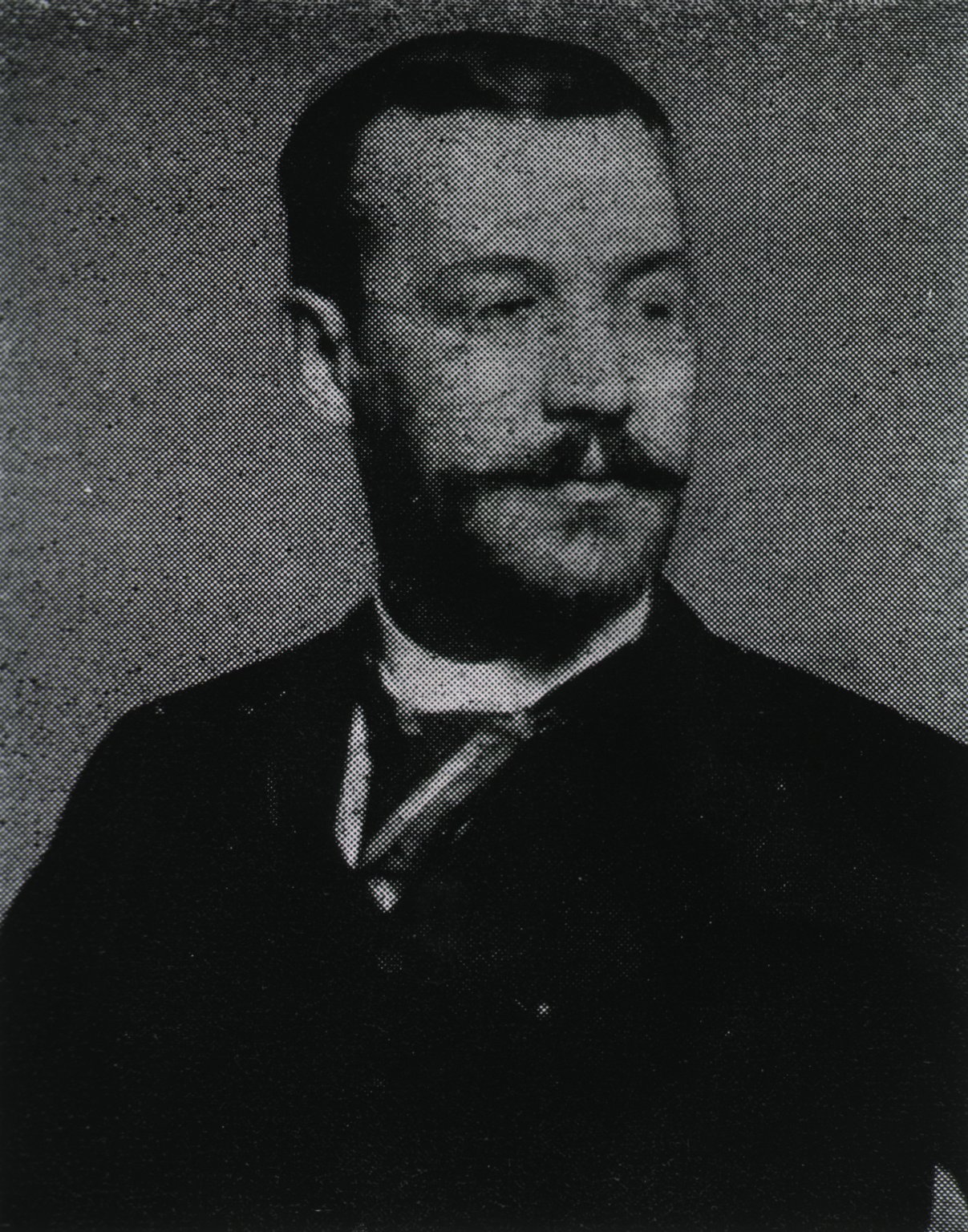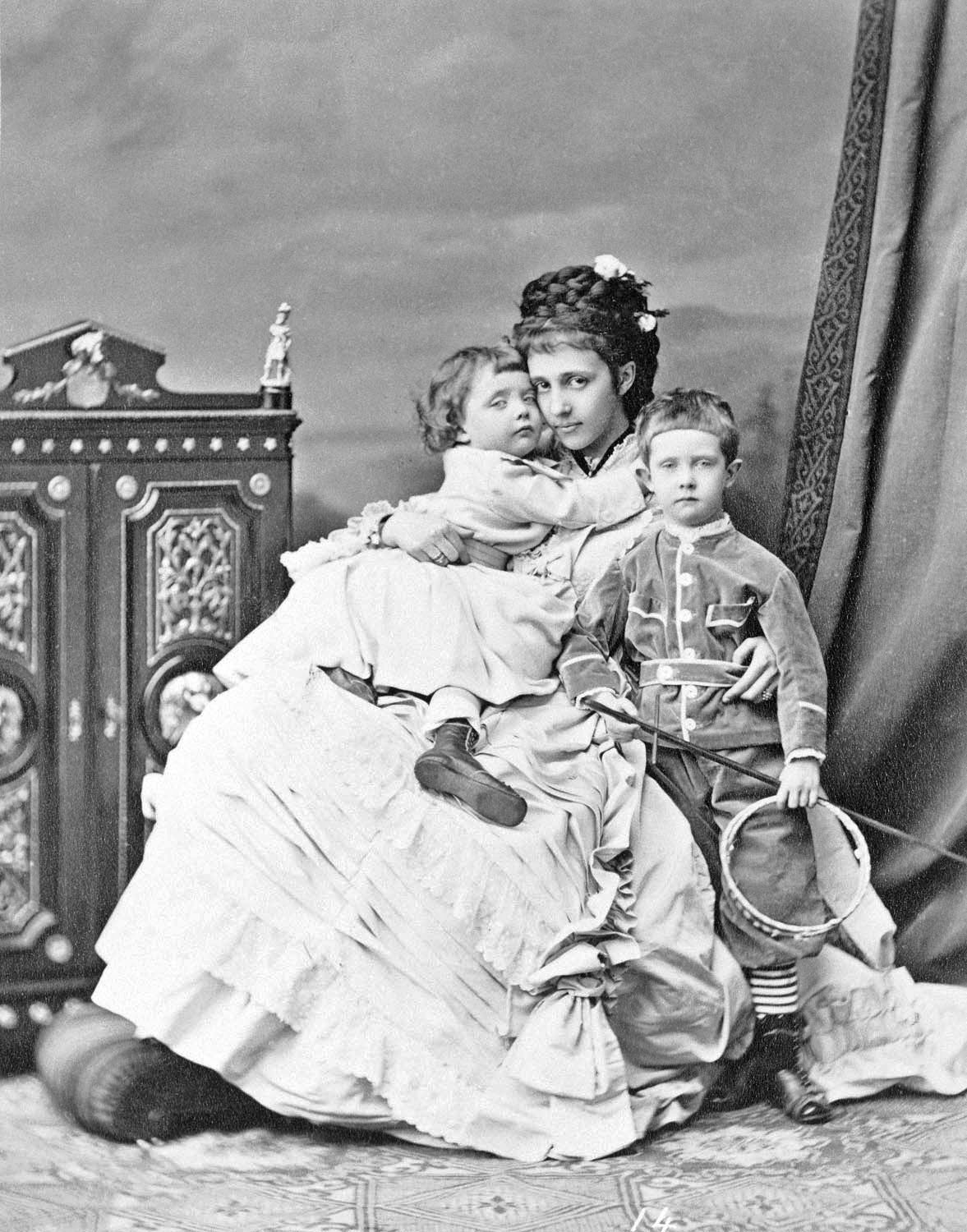|
Victor Eisenmenger
Victor Eisenmenger (29 January 1864 – 11 December 1932) was an Austrian medical doctor. The son of portrait painter and professor August Eisenmenger, he attended the University of Vienna and became the personal physician of Archduke Franz Ferdinand. Eisenmenger's syndrome – a phenomenon in which longstanding heart defects affect the blood flow to a person's lungs – is named in his honor. Early life Eisenmenger was born in Vienna in 1864, the son of portrait painter August Eisenmenger and his wife Emma. August Eisenmenger became known for his work on the ceiling panels at Vienna's Musikverein, and he was a professor at the Academy of Fine Arts Vienna, where his students included Rudolf Ernst. Victor Eisenmenger had two brothers, a well-known engineer named Hugo and a civil servant in finance named Ewald. Eisenmenger enjoyed art and natural science, but, as he put it, "An artistic career and a study of natural science were both denied to me, the former because my talent was not ... [...More Info...] [...Related Items...] OR: [Wikipedia] [Google] [Baidu] |
Eisenmenger
Eisenmenger (German for "ironmonger") is a German surname. Notable people with the surname include: *Arthur Eisenmenger (1914–2002), German graphic designer *August Eisenmenger (1830–1907), Austrian painter *Johann Andreas Eisenmenger (1654–1704), German orientalist, Antisemite * Rudolf Eisenmenger (1902–1994), Austrian artist, painter *Samuel Eisenmenger, genannt Sideocrates (1534–1585), German physician, theologian and astrologer *Victor Eisenmenger (1864–1932) Austrian medical doctor, known for Eisenmenger's syndrome * Wolfgang Eisenmenger (physicist) (1930–2016), German physicist *Wolfgang Eisenmenger (born 1944), German forensic pathologist See also *Eisenmenger's syndrome Eisenmenger syndrome or Eisenmenger's syndrome is defined as the process in which a long-standing left-to-right cardiac shunt caused by a congenital heart defect (typically by a ventricular septal defect, atrial septal defect, or less commonly, pat ... {{surname, Eisenmenger German-languag ... [...More Info...] [...Related Items...] OR: [Wikipedia] [Google] [Baidu] |
Infanta Maria Theresa Of Portugal
, birth_date = , birth_place = Löwenstein Castle, Kleinheubach, Kingdom of Bavaria , death_date = , death_place = Vienna, Austria, Nazi Germany , burial_place = Imperial Crypt , house = Braganza , spouse = , issue = , father = Miguel I of Portugal , mother = Princess Adelaide of Löwenstein-Wertheim-Rosenberg , religion = Roman Catholicism , signature = Assinatura Maria Teresa, Arquiduquesa de Áustria.svg Infanta Maria Theresa of Portugal ( pt, Dona Maria Teresa da Imaculada Conceição Fernanda Eulália Leopoldina Adelaide Isabel Carolina Micaela Rafaela Gabriela Francisca de Assis e de Paula Gonzaga Inês Sofia Bartolomea dos Anjos de Bragança; 24 August 1855 – 12 February 1944) was a Princess of the House of Braganza. She became by marriage an Archduchess of Austria and also sister-in-law of Emperors Franz Joseph I of Austria and Maximilian I of Mexico, as well as step-grandmother of Emperor Charles I of Austria. Early life Maria Teresa was born in Kleinhe ... [...More Info...] [...Related Items...] OR: [Wikipedia] [Google] [Baidu] |
Austrian Physicians
Austrian may refer to: * Austrians, someone from Austria or of Austrian descent ** Someone who is considered an Austrian citizen, see Austrian nationality law * Austrian German dialect * Something associated with the country Austria, for example: ** Austria-Hungary ** Austrian Airlines (AUA) ** Austrian cuisine ** Austrian Empire ** Austrian monarchy ** Austrian German (language/dialects) ** Austrian literature ** Austrian nationality law ** Austrian Service Abroad ** Music of Austria **Austrian School of Economics * Economists of the Austrian school of economic thought * The Austrian Attack variation of the Pirc Defence chess opening. See also * * * Austria (other) * Australian (other) * L'Autrichienne (other) is the feminine form of the French word , meaning "The Austrian". It may refer to: *A derogatory nickname for Queen Marie Antoinette of France *L'Autrichienne (film), ''L'Autrichienne'' (film), a 1990 French film on Marie Antoinette with ... [...More Info...] [...Related Items...] OR: [Wikipedia] [Google] [Baidu] |
1932 Deaths
Year 193 ( CXCIII) was a common year starting on Monday (link will display the full calendar) of the Julian calendar. At the time, it was known as the Year of the Consulship of Sosius and Ericius (or, less frequently, year 946 ''Ab urbe condita''). The denomination 193 for this year has been used since the early medieval period, when the Anno Domini calendar era became the prevalent method in Europe for naming years. Events By place Roman Empire * January 1 – Year of the Five Emperors: The Roman Senate chooses Publius Helvius Pertinax, against his will, to succeed the late Commodus as Emperor. Pertinax is forced to reorganize the handling of finances, which were wrecked under Commodus, to reestablish discipline in the Roman army, and to suspend the food programs established by Trajan, provoking the ire of the Praetorian Guard. * March 28 – Pertinax is assassinated by members of the Praetorian Guard, who storm the imperial palace. The Empire is auctioned off ... [...More Info...] [...Related Items...] OR: [Wikipedia] [Google] [Baidu] |
1864 Births
Events January–March * January 13 – American songwriter Stephen Foster ("Oh! Susanna", "Old Folks at Home") dies aged 37 in New York City, leaving a scrap of paper reading "Dear friends and gentle hearts". His parlor song " Beautiful Dreamer" is published in March. * January 16 – Denmark rejects an Austrian-Prussian ultimatum to repeal the Danish Constitution, which says that Schleswig-Holstein is part of Denmark. * January 21 – New Zealand Wars: The Tauranga campaign begins. * February – John Wisden publishes '' The Cricketer's Almanack for the year 1864'' in England; it will go on to become the major annual cricket reference publication. * February 1 – Danish-Prussian War (Second Schleswig War): 57,000 Austrian and Prussian troops cross the Eider River into Denmark. * February 15 – Heineken brewery founded in Netherlands. * February 17 – American Civil War: The tiny Confederate hand-propelled submarine ''H. L. Hunl ... [...More Info...] [...Related Items...] OR: [Wikipedia] [Google] [Baidu] |
Vienna Central Cemetery
The Vienna Central Cemetery (german: Wiener Zentralfriedhof) is one of the largest cemeteries in the world by number of interred, and is the most well-known cemetery among Vienna's nearly 50 cemeteries. The cemetery's name is descriptive of its significance as Vienna's biggest cemetery, not of its geographic location, as it is not in the city center of the Austrian capital, but on the outskirts, in the outer city district of Simmering. History and description Unlike many others, the Vienna Central Cemetery is not one that has evolved slowly. The decision to establish a new, big cemetery for Vienna came in 1863 when it became clear that – due to industrialization – the city's population would eventually increase to such an extent that the existing communal cemeteries would prove to be insufficient. City leaders expected that Vienna, then capital of the large Austro-Hungarian Empire, would grow to four million inhabitants by the end of the 20th century, as no-one foresaw the Em ... [...More Info...] [...Related Items...] OR: [Wikipedia] [Google] [Baidu] |
Ventricular Septal Defect
A ventricular septal defect (VSD) is a defect in the ventricular septum, the wall dividing the left and right ventricles of the heart. The extent of the opening may vary from pin size to complete absence of the ventricular septum, creating one common ventricle. The ventricular septum consists of an inferior muscular and superior membranous portion and is extensively innervated with conducting cardiomyocytes. The membranous portion, which is close to the atrioventricular node, is most commonly affected in adults and older children in the United States. It is also the type that will most commonly require surgical intervention, comprising over 80% of cases. Membranous ventricular septal defects are more common than muscular ventricular septal defects, and are the most common congenital cardiac anomaly. Signs and symptoms Ventricular septal defect is usually symptomless at birth. It usually manifests a few weeks after birth. VSD is an acyanotic congenital heart defect, aka a lef ... [...More Info...] [...Related Items...] OR: [Wikipedia] [Google] [Baidu] |
Nail Clubbing
Nail clubbing, also known as digital clubbing or clubbing, is a deformity of the finger or toe nails associated with a number of diseases, mostly of the heart and lungs.Freedberg, et al. (2003). ''Fitzpatrick's Dermatology in General Medicine''. (6th ed.). McGraw-Hill. . When it occurs together with joint effusions, joint pains, and abnormal skin and bone growth it is known as hypertrophic osteoarthropathy. Clubbing is associated with lung cancer, lung infections, interstitial lung disease, cystic fibrosis, or cardiovascular disease. Clubbing may also run in families, and occur unassociated with other medical problems. The incidence of clubbing is unknown; it was present in about 1% of people admitted to an internal medicine unit of a hospital. Clubbing has been recognized as a sign of disease since the time of Hippocrates. Causes Clubbing is associated with * Lung disease: ** Lung cancer ** Interstitial lung disease most commonly idiopathic pulmonary fibrosis ** Complicate ... [...More Info...] [...Related Items...] OR: [Wikipedia] [Google] [Baidu] |
Cyanosis
Cyanosis is the change of body tissue color to a bluish-purple hue as a result of having decreased amounts of oxygen bound to the hemoglobin in the red blood cells of the capillary bed. Body tissues that show cyanosis are usually in locations where the skin is thinner, including the mucous membranes, lips, nail beds, and ear lobes. Some medications containing amiodarone or silver, Mongolian spots, large birth marks, and the consumption of food products with blue or purple dyes can also result in the bluish skin tissue discoloration and may be mistaken for cyanosis. Cyanosis is further classified into central cyanosis vs. peripheral cyanosis. Pathophysiology The mechanism behind cyanosis is different depending on whether it is central or peripheral. Central cyanosis Central cyanosis is caused by a decrease in arterial oxygen saturation (SaO2) and begins to show once the concentration of deoxyhemoglobin in the blood reaches a concentration of ≥ 5.0 g/dL (≥ 3.1 mmol/L ... [...More Info...] [...Related Items...] OR: [Wikipedia] [Google] [Baidu] |
Hypoxemia
Hypoxemia is an abnormally low level of oxygen in the blood. More specifically, it is oxygen deficiency in arterial blood. Hypoxemia has many causes, and often causes hypoxia as the blood is not supplying enough oxygen to the tissues of the body. Definition ''Hypoxemia'' refers to the low level of oxygen in blood, and the more general term ''hypoxia'' is an abnormally low oxygen content in any tissue or organ, or the body as a whole. Hypoxemia can cause hypoxia (hypoxemic hypoxia), but hypoxia can also occur via other mechanisms, such as anemia. Hypoxemia is usually defined in terms of reduced partial pressure of oxygen (mm Hg) in arterial blood, but also in terms of reduced content of oxygen (ml oxygen per dl blood) or percentage saturation of hemoglobin (the oxygen-binding protein within red blood cells) with oxygen, which is either found singly or in combination. While there is general agreement that an arterial blood gas measurement which shows that the partial pressure of ... [...More Info...] [...Related Items...] OR: [Wikipedia] [Google] [Baidu] |
Grand Larceny
Larceny is a crime involving the unlawful taking or theft of the personal property of another person or business. It was an offence under the common law of England and became an offence in jurisdictions which incorporated the common law of England into their own law (also statutory law), where in many cases it remains in force. The crime of larceny has been abolished in England, Wales, Ireland, and Northern Ireland, broken up into the specific crimes of burglary, robbery, fraud, theft, and related crimes. However, larceny remains an offence in parts of the United States, Jersey, and in New South Wales, Australia, involving the taking (caption) and carrying away (asportation) of personal property without the owner's consent. Etymology The word "larceny" is a late Middle English word, from the Anglo-Norman word ''larcin'', "theft". Its probable Latin root is ''latrocinium'', a derivative of ''latro'', "robber" (originally mercenary). By nation Australia New South Wales In the st ... [...More Info...] [...Related Items...] OR: [Wikipedia] [Google] [Baidu] |







